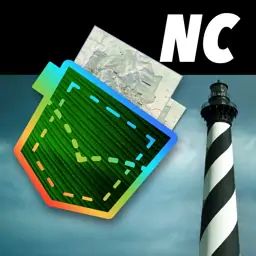Fact SheetRaven Rock |
Fact Sheet for Raven Rock State Park (SP) in North Carolina. Published by North Carolina State Parks.
featured in
| North Carolina Pocket Maps |  |
Raven Rock STATE PARK
Activities
Experience the Park!
11 PRIMITIVE BACKPACK
6 PADDLE-IN
CAMPSITES
GPS: 35.4597, -78.9127
Raven Rock State Park
3009 Raven Rock Road
Lillington, NC 27546
910-893-4888
raven.rock@ncparks.gov
The Moccasin Branch
Campground offers
In 1854, the rock was
renamed “Raven Rock”
because of the ravens
that roosted at the top.
30 drive-in sites
that have RV hookups,
cabins, and a bathhouse.
Fun Facts
■■ A bill was passed in 1969 establishing the area as a
state park. Over 220 acres of land was purchased and
170 acres were donated by Burlington Industries. The
park has since grown to over 4,800 acres.
■■ Raven Rock State Park sits on “The Fall Zone,” an area
where hard resistant rocks of the foothills give way to
the softer rocks and sediments of the coastal plain.
Over
13 miles of
bike trails
■■ There are two sets of rapids in the Cape Fear River
that are in the park: the Fish Traps Rapids (class 1) and
Lanier Falls Rapids (class 2).
The park features
vegetation not commonly
found in the
Piedmont region,
including mountain
laurel, mountain
rhododendron
and mountain
galax.
■■ The Raven Rock outcrop rises 150 feet and stretches
more than a mile along the Cape Fear River.
■■ Originally, the rock was called “Patterson’s Rock,”
named for an early settler who found refuge there
after his canoe capsized.
■■ Before the arrival of European settlers in the
mid-1700s, the area was inhabited by Siouan and
Tuscarora Native American tribes.
During spring migratory
season, visitors can spot
almost 20 species of warblers
in the park, including pine,
yellow-rumped
and Blackburnian.
The park was home to
“Slow Poke,” a possum
who won a beauty contest
in 1970.
■■ Raven Rock was an important landmark for river
pilots traveling the Cape Fear River.
■■ The Northington lock and dam was built to facilitate
travel by boat but was destroyed by a hurricane in
1859. The remnants can still be seen in the park today.
■■ The park boasts a LEED-certified visitor center with
classrooms, an interactive exhibit hall, amphitheater
space, and a Native American projectile point display.
See the
Park Map
ncparks.gov
MNQPV

